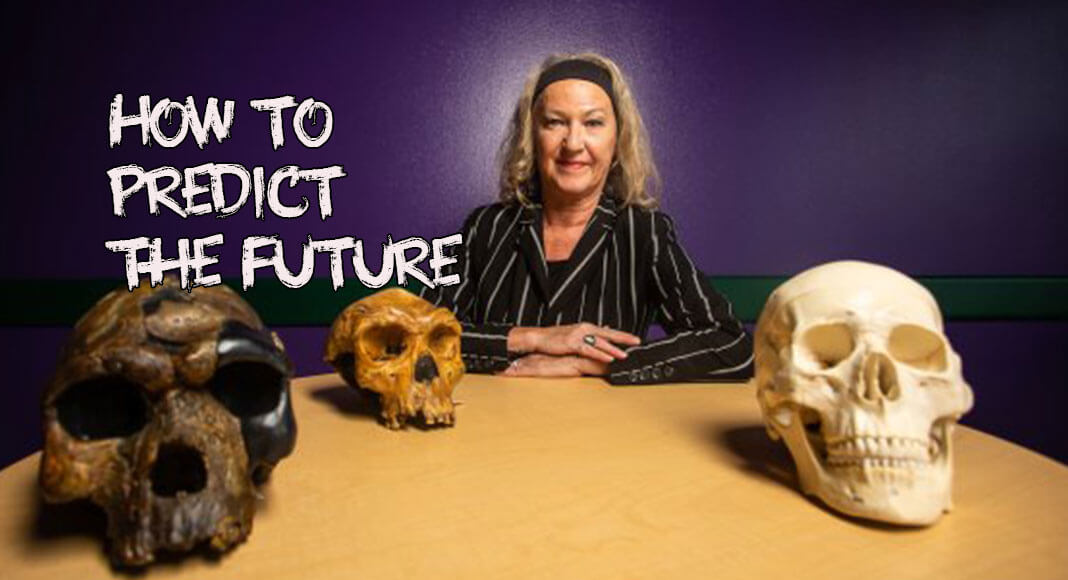
Texas Border Business
MCALLEN, TX – “I’ve been predicting for years that there would be a new pandemic,” says South Texas College’s Director of Anthropology, Wendy Branwell.
There weren’t any crystal balls or fancy tarot cards involved in that prophecy. Instead, the 20-year veteran professor chalks it up to good old-fashioned expertise. “That’s just given my anthropological training — so please don’t call me Nostradamus.”
Predicting is one thing … preventing is quite another. But Branwell insists that anthropology – the study of what makes us human – holds many relevant lessons to the current COVID-19 crisis.
“I don’t want to sound like a cliché, but history does repeat itself,” says Branwell. And throughout history, says the professor, there have always been pandemics, including typhus, smallpox and the 1918 flu. More contemporary pandemics include tuberculosis, HIV, and now, COVID-19.
“I think climate change is spurring the increase in diseases, such as, for example, Ebola,” explains Branwell. Many scientists hypothesize that as environmental conditions shift, there could be a rise in mosquito- and animal-borne illnesses. According to the Cleveland Clinic, numerous outbreaks have been linked to a combination of human and environmental changes.
Take coronaviruses, for example, which are transmitted between animals and people. Research has found that Severe Acute Respiratory Syndrome Coronavirus 2 (SARS-CoV-2) was likely transmitted to humans via civet cats. Meanwhile, Middle East Respiratory Syndrome (MERS), also caused by a coronavirus, probably came from camels. It is thought that as extreme shifts in weather encroach on wildlife habitat, illness-carrying animals may migrate and come into closer contact with people.
It’s a pattern seen throughout history, and as new research suggests, might have also been a cause of the Black Death, the bubonic plague that swept Europe and Asia in the 14th century. Studies show that drought in Central Asia may have decimated rat populations and encouraged illness-carrying fleas to find new hosts, such as humans.
“The difference between the Black Death and COVID is that the plague was bacterial, not viral,” notes Branwell. Though the bubonic plague was caused by the bacterium Yersinia pestis from flea bites, people could transmit the disease through coughing once infected. As Branwell points out, “It was mostly pneumonic, so it’s spread via aerosols, just as the COVID virus.”
The fleas traveled on mammals, as well as on woolen blankets traded along the Silk Road. Says the professor, “International travel brings disease with it, just as we see today.”
Thankfully, the similarities in the disease end there. The Black Death was the most fatal pandemic in recorded human history, and the professor notes that its severity was likely due to the state of medicine, which had deteriorated after the fall of the Roman Empire. Says Branwell, “When we entered the so-called ‘Dark Ages,’ there really wasn’t a lot of medical science to promote healthy well-being.”
Yet, as the professor says, some modern ways of fighting pandemics are as old as the Middle Ages. For example, thanks to the 14th century, we have the word “quarantine,” which comes from the Italian phrase “forty days,” or quaranta giorni. To protect itself from the Black Death, a Venetian-controlled city in Croatia decreed that all ships and people had to isolate for 40 days before entering.
By far, the most interesting similarity between then and now might be paychecks.
“The plague caused extraordinary social, economic and political changes throughout Europe, including higher wages for workers,” says Branwell.
A short history: after the fall of the Roman Empire, a feudal system emerged in Europe, where serfs belonging to a low social class lived and worked on land owned by the nobility. However, many manors lost workers during the plague, and there was nobody to harvest the fields. According to the professor, “Those nobles … were begging workers to come for extremely high labor costs.”
On top of higher wages, the peasants also demanded land, creating a shift in wealth and a step up in social status for the masses.
And while fiefdoms are a thing of the past, today, traditionally low-wage careers are also getting a post-pandemic pay bump. From McDonald’s to Amazon and Costco, new hires now enjoy a $15 hourly wage or more, according to the Associated Press.
“It’s an interesting parallel between what was going on in the 14th century and what’s going on now,” notes Branwell.
Drawing correspondences from history to transform our understanding of current events is what anthropology is all about, says the professor. Enlightening discussions are the norm in classes like Intro to Archaeology and Physical Anthropology, where students learn about human evolution, genetics, primatology and more.
“Anthropology is an extremely important science,” says Branwell. As part of her curriculum, STC’s “Bone Lab” brings the past to life with a complete skeleton of a bonobo chimpanzee and 20 casts of human skulls.
“I bring the skulls to my classes so that students can see the evolutionary changes in our ancient ancestors from as far back as 6 million years ago,” explains the professor. “They see the change in tooth morphology, the growth in the cranial vault, and begin to realize, ‘Wow, maybe there is something to this.’”
Make no bones about it, anthropology grads go on to explore some unique careers off the beaten track. Physical anthropologists often go into forensics, where they can help solve crimes or archeological mysteries. Meanwhile, cultural anthropologists help communities around the world live healthier lives, including creating needle exchange programs in appropriate cultural contexts to help prevent HIV.
In fact, anthropology careers are growing by 10 percent in Texas, double the national average, according to the U.S. Bureau of Labor Statistics. From wildlife management to helping major corporations research consumer habits, anthropology grads go far with a versatile degree and stimulating field of study.
“Most students who pursue anthropology do it in part because they want to travel around the world,” shares Branwell. “I did it backward.”
From the age of 16 to 35, the professor traveled from Nepal to the Netherlands and even had a stint as a photojournalist in Costa Rica. So, it was natural to choose the field of anthropology and put her cultural acumen to work. After teaching at various colleges in Colorado for a decade, Branwell came to STC in 2010 to kick start the Anthropology department.
Now, 11 years later, Branwell says, “I’m seeing more and more students deciding to become anthropology majors.”
Her advice for becoming future-savvy thinkers, beyond signing up for Anthropology 101?
ç
According to the veteran investigator of human history, it’s an important responsibility to be well-informed and well-educated.
After all, Branwell says, “The more you know about human history, the more you can predict what will happen in the future.”












